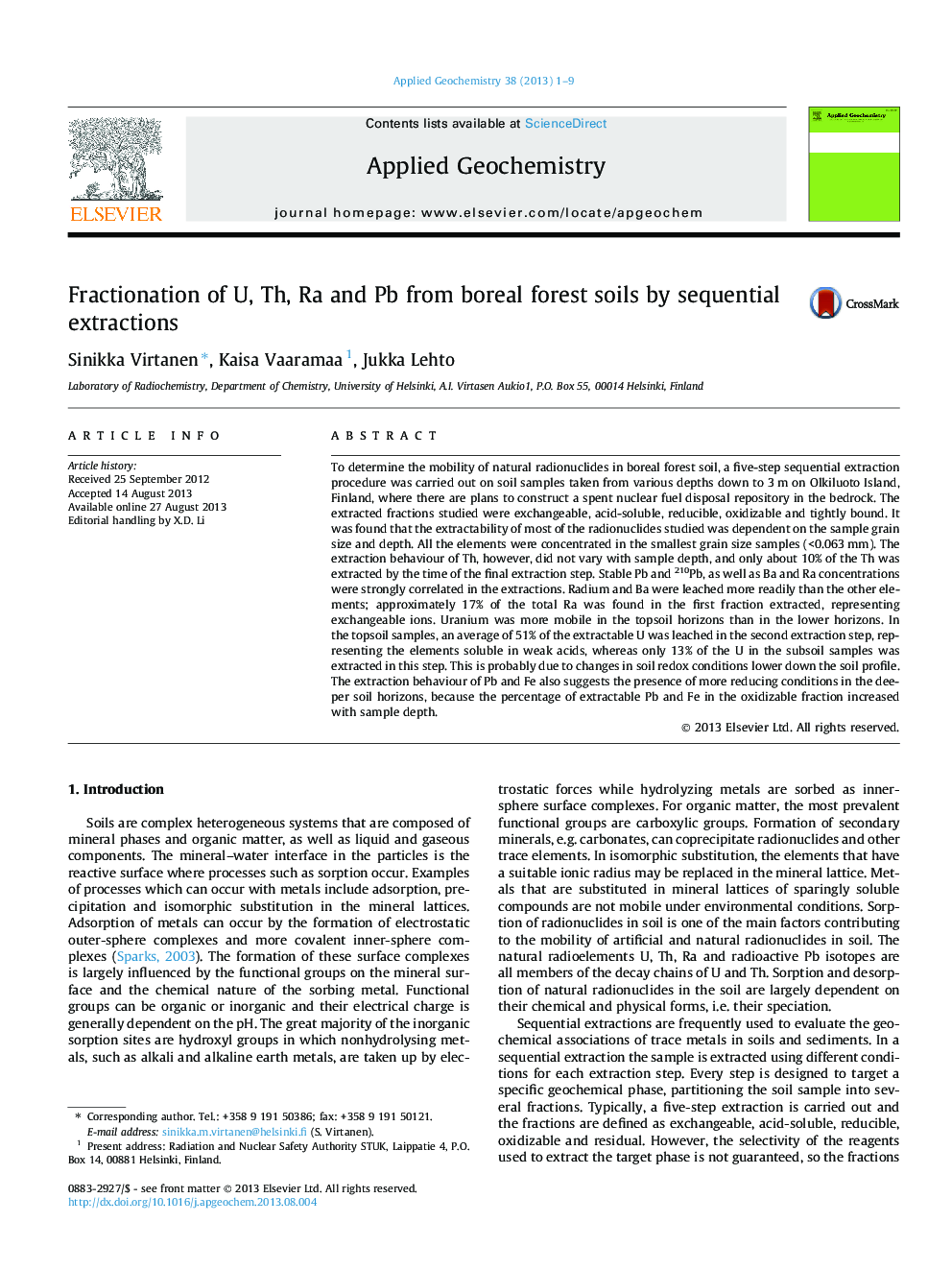| Article ID | Journal | Published Year | Pages | File Type |
|---|---|---|---|---|
| 4435902 | Applied Geochemistry | 2013 | 9 Pages |
•A five-step sequential extraction was performed to boreal forest soil samples.•Extractions gave information about mobility and sorption of natural radionuclides.•Fractionation of U, Th, Pb and Ra varied between the sample depth and grain size.•U, Pb and Fe fractionation suggested more reducing conditions in the subsoil samples.•Ra was the only radionuclide that could be regarded as mobile.
To determine the mobility of natural radionuclides in boreal forest soil, a five-step sequential extraction procedure was carried out on soil samples taken from various depths down to 3 m on Olkiluoto Island, Finland, where there are plans to construct a spent nuclear fuel disposal repository in the bedrock. The extracted fractions studied were exchangeable, acid-soluble, reducible, oxidizable and tightly bound. It was found that the extractability of most of the radionuclides studied was dependent on the sample grain size and depth. All the elements were concentrated in the smallest grain size samples (<0.063 mm). The extraction behaviour of Th, however, did not vary with sample depth, and only about 10% of the Th was extracted by the time of the final extraction step. Stable Pb and 210Pb, as well as Ba and Ra concentrations were strongly correlated in the extractions. Radium and Ba were leached more readily than the other elements; approximately 17% of the total Ra was found in the first fraction extracted, representing exchangeable ions. Uranium was more mobile in the topsoil horizons than in the lower horizons. In the topsoil samples, an average of 51% of the extractable U was leached in the second extraction step, representing the elements soluble in weak acids, whereas only 13% of the U in the subsoil samples was extracted in this step. This is probably due to changes in soil redox conditions lower down the soil profile. The extraction behaviour of Pb and Fe also suggests the presence of more reducing conditions in the deeper soil horizons, because the percentage of extractable Pb and Fe in the oxidizable fraction increased with sample depth.
